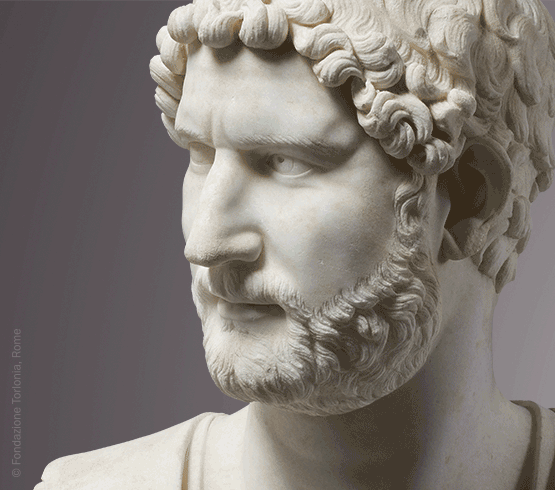Arts lovers headed to performances know the drill: Enter the theater, settle into your seat and wait for the house lights to go down. Musicians, actors or dancers materialize onstage, and your adventure begins.
“Our audience knows to expect the unexpected when they’re joining us in one of these projects,” says Bob Bursey, the Austin group’s executive and artistic director. He believes in showcasing artists who are revamping the performing-arts experience.
“I think that’s a generational consideration,” Bursey notes. “Young audiences, in particular, are very interested in different ways of interacting with works of art. We want to be responsive to that. Some of the most interesting art work is moving in that direction.”
Take NOWISWHENWEARE (the stars), by theater artist and technologist Andrew Schneider (March 14-22, 2025). Schneider marshals 4,000 points of light and a 496-channel surround-sound system to turn the stage into its own universe. The audience steps in and takes a few moments to adjust to the darkness, and an unseen narrator takes charge. As the journey unfolds, viewers may see their own features reflected in the heavens.
Having experienced Schneider’s creation at the Brooklyn Academy of Music, Bursey says “it’s a wonderfully moving piece,” and he thinks that’s essential. “A lot of arts-and-technology work sometimes foregrounds the ‘gee–wow’ factor of the technology, without really reaching the pinnacle of emotional impact and aesthetic beauty,” he says. “When we look at technology-related projects, that’s what we are searching for: situations where the technology serves the telling of an interesting or beautiful story.”
If you turn out for SOCIAL! Dance Club, by musician David Byrne, choreographer Steven Hoggett and designer Christine Jones, put on your dancing shoes: This club has no place for wallflowers. An outgrowth of a project Byrne helped devise during the pandemic—when it was called Social Distance Dance Club—the show (April 24-27, 2025) will bring everyone onto the Bass Concert Hall stage for a “communal and celebratory experience,” Bursey says.
“The audience members essentially are the performers,” Bursey explains. Each of the 100 participants will stand in their own spotlight. Leaders called dance ambassadors will teach everyone “movement sequences that absolutely everyone can do,” Bursey says, then a DJ will take off with a playlist ranging from James Brown to Daft Punk and Byrne’s own Talking Heads. A bit like an old-time square-dance caller, Byrne’s voice will supply the moment-to-moment dance cues. The dancers will be free to obey his commands or follow their own booty-shaking urges.

1 ⁄9
DakhaBrakha; photo by Helen Bozhko.

2 ⁄9
NOWISWHENWEARE (the stars); photo by Andrew Schneider.

3 ⁄9
Ink; Photo by Summer Yen.

4 ⁄9
Theotime Langlois de Swarte. Photo by Marco Borggeve.

5 ⁄9
Versa Style Dance Company; Photos courtesy of the artists.

6 ⁄9
Branford Marsalis Quartet; Photo by Eric Ryan Anderson.

7 ⁄9
Lily Taylor in Suzanne Bocanegra’s Honor; Photo by Stephanie Berger.

8 ⁄9
SOCIAL! Dance Club; Photo courtesy of the artists.

9 ⁄9
Sweet Honey in the Rock; Photo courtesy of the artists.
Yes, the machine takes part in Yi’s choreography. “He is exploring the creative potential of robots, which I think is fascinating,” Bursey says. In a video excerpt, the dancers’ sweeping gestures—in tandem with Kurokawa’s holographic projections—seem to fling Tong’s calligraphy strokes into existence. And the robot joins in.
In a different twist on multimedia, The Storyville Mosquito, by Canadian composer, theatrical producer and visual artist Kid Koala (Nov. 2), is billed as “a theatrical cinema experience.” That does not mean that the audience simply watches a film. Instead, 14 performers—including musicians, puppeteers and cinematographers—bring to life the tale of a musical mosquito who travels to the big city in hopes of joining a band. As the action unfolds on miniature sets, cameras capture everything in real time and project it onto a screen at the rear of the stage. Voilà! Instant “movie.”
“What I love about this piece is that it’s so intimately crafted, with all these miniature puppets they’re working with,” Bursey says. “The way the score interacts with the sound effects and lighting and camera work is really detailed. And it’s a heartwarming story about a musician looking for his place in the world. It’s wonderful for all ages—really accessible for younger audiences.”
The world-music quartet DakhaBrakha, whose name means “give and take” in old Ukrainian, offers another example (April 11). The group’s members double as singers and instrumentalists, marshaling instruments ranging from the piano and cello to the zgaleyka, a Slavic wind instrument, and the garmoshka, a Russian accordion played with buttons.
DakhaBrakha’s style “runs a real range, from very contemporary punk influences to taking pages from the American minimalist playbook, to traditional Ukrainian melodies. They meld all that together in a really interesting way,” Bursey says. “In a time of great attention to international geopolitical events, I’m very curious to see how the arts can be a part of that conversation—where we can create understanding … through cultural exchange.”
The quest for understanding also underlies Postcards from the Border, a collaboration by Austin singer-songwriter Carrie Rodriguez, novelist Oscar Cásares and photographer Joel Salcido (Jan. 24-25). “They’re very interested in telling their story about life in the border lands of Texas,” Bursey says. “It’s so often in the news as a place of trauma or strife or conflict. They, as folks who come from that region, want to reveal the multigenerational family histories … and the beauty of what it means to be from that part of our state.”
For all the season’s emphasis on new and newish works, venerable names will also get the spotlight. Twyla Tharp Dance will open the season with a program saluting the choreographer’s 60 years of dance innovation (Sept. 26). The vocal group Sweet Honey in the Rock will celebrate its 50 years of showcasing African-American history and culture (Feb. 14).
Fifty years, 60 years—how about 300? The baroque-music ensemble Les Arts Florissants will mark the tricentennial of Antonio Vivaldi’s The Four Seasons, putting the scintillating concertos alongside works that illustrate Vivaldi’s milieu and influence (March 27). The young French violinist Théotime Langlois de Swarte will come along as soloist.
“He’s a dynamic violinist—extraordinary, very charismatic,” Bursey says. “It’s hard to think of something that’s more iconic than Vivaldi’s Four Seasons. … I’m enamored when young artists are returning to it and trying to present it in a fresh light.”
But wait! The season will turn to an even older work: Honor, a majestic Flemish tapestry woven nearly 500 years ago. Admittedly, artist Bernard van Orley’s brainchild will stay home at New York’s Metropolitan Museum of Art rather than travel to Austin. But its image will be all over Honor: An Artist Lecture by conceptual artist and Houston native Suzanne Bocanegra (Jan. 31 and Feb. 1).
Stage and screen actress Lili Taylor will take center stage in what will at first appear to be an art-history talk. But Bocanegra’s text will veer off to an array of musings on topics historical and contemporary, from the Spanish Inquisition to singer-songwriter Carole King’s Tapestry.
Bocanegra’s Honor is one of several shows Texas Performing Arts will present in tandem with Austin’s Fusebox. The cooperation pays off for both groups, Bursey says.
“For Fusebox, because they’re now a biennial festival, it allows them to have some presence in our community year-round,” Bursey notes. “And it allows us to make sure that we’re finding the right audiences for some of these very adventurous projects. … That’s right in the wheelhouse of Fusebox. They have a great, loyal following, and we know those folks are going to come out.”
-STEVEN BROWN






